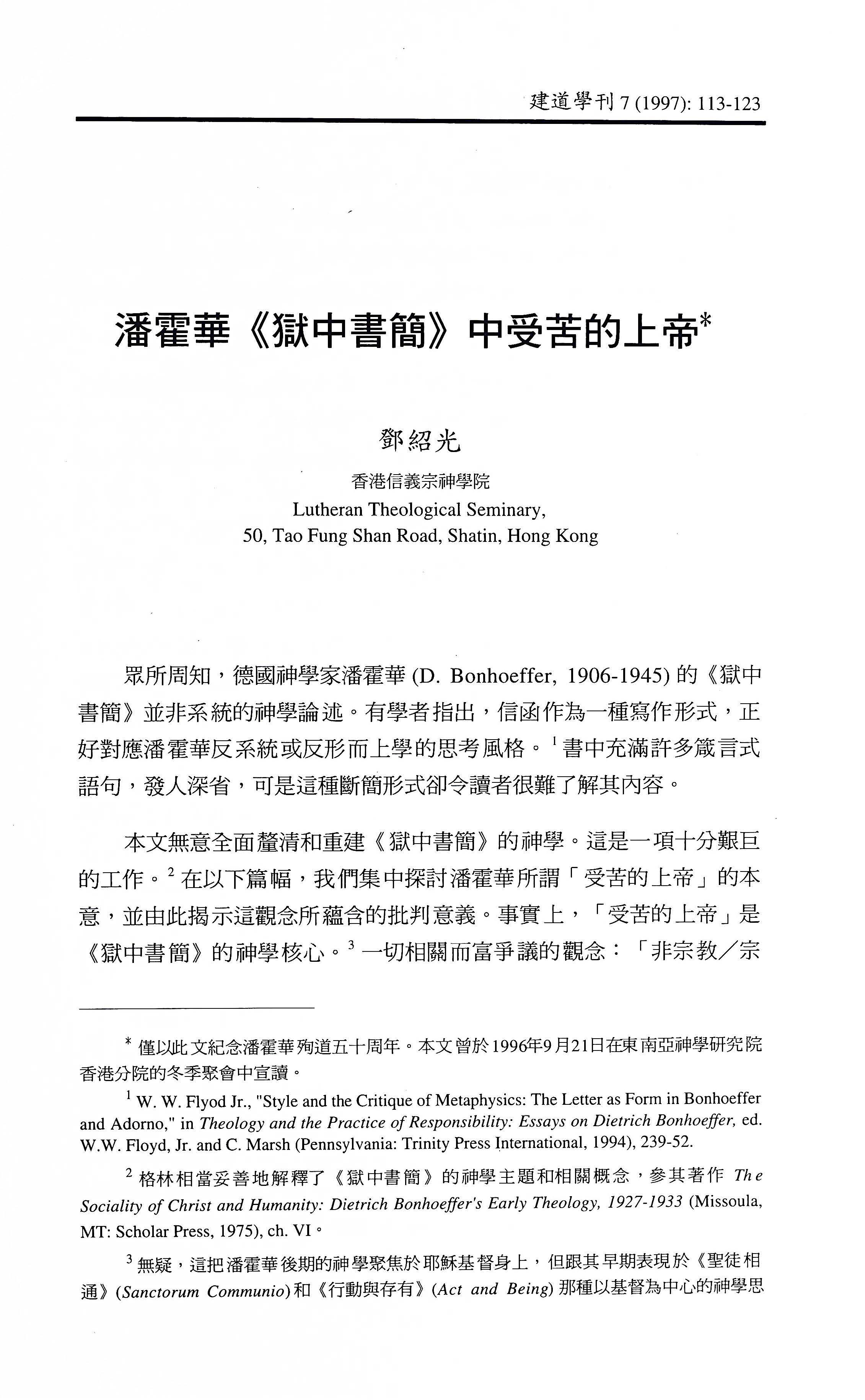潘霍華《獄中書簡》中受苦的上帝 / 鄧紹光
撮要
「受苦的上帝」是潘霍華《獄中書簡》的核心概念,同時批判宗教時代的全能上帝觀與成熟及齡的世界的自立自主。一方面,十架的基督揭示上帝並非處在世界的邊緣,卻是以受苦的方式成為生命的中心;另一方面,上帝在十字架的死亡乃一收攝能力、讓開一步的舉動,讓世界有其空間自生自長而成為世界,有別於上帝。這一舉動同時展示出人在世生活的恰當方式:為他者而活;人必須自限其能力以讓出空間讓他者生存。潘霍華這一對「受苦的上帝」的解釋即深具現代意義。
ABSTRACT
As a crucial theological concept in D. Bonhoeffer’s Letters and Papers in Prison, the “Suffering God” criticizes both the “all-powerful God” of the religious age and the “autonomy” of the world come of age. On the one hand, the Christ on the cross reveals that God is not on the boundary of the world but at the center of life in the way of suffering. On the other hand, God’s death on the cross expresses his withdrawal of power so as to let the world to be itself other than God. It simultaneously shows the most appropriate way of humanity living in the world: being for others; humanity has to limit one’s own power to give room for other’s existence. Such an interpretation of the “Suffering God” is of significance for the modern world.
原載於《建道學刊》7期(1997年1月),頁113-123。
Latest Articles
新手牧者研究計劃(三):新手牧者的身心靈狀態 / 盧慧儀
2025 年 11 月 19 日
個體與關係:滕近輝思想中「深化」的靈性觀 / 倪步曉
2025 年 11 月 18 日
香港九龍塘基督教中華宣道會之起源和發展史/陳智衡
2025 年 10 月 20 日
Highlights
[電子書]困境與抉擇:「建道研究中心30週年誌慶」跨學科研討會論文集/廖炳堂、倪步曉主編
2025 年 1 月 2 日
從梧州到長洲:建道神學院125年的挑戰與恩典 / 陳智衡
2023 年 10 月 1 日
微小教會的見證/高銘謙
2023 年 6 月 1 日







